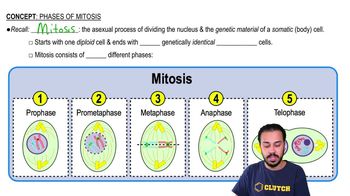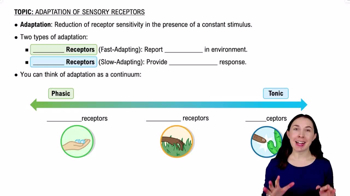Here are the essential concepts you must grasp in order to answer the question correctly.
Cell Cycle Stages
The cell cycle consists of several stages that a cell goes through to divide and replicate. These stages include interphase (where the cell prepares for division) and the mitotic phase, which is further divided into prophase, prometaphase, metaphase, anaphase, and telophase. Understanding these stages is crucial for identifying the specific characteristics and events that occur during cell division.
Recommended video:
Mitosis
Mitosis is the process of nuclear division that results in two genetically identical daughter cells. It is divided into five stages: prophase (chromosomes condense), prometaphase (nuclear envelope breaks down), metaphase (chromosomes align at the equatorial plane), anaphase (sister chromatids separate), and telophase (nuclear membranes reform). Each stage has distinct events that are essential for proper cell division.
Recommended video:
Chromosome Behavior
During mitosis, chromosomes undergo specific behaviors that are critical for accurate segregation. In prophase, chromosomes become visible as they condense. In metaphase, they align at the cell's equator, and during anaphase, the sister chromatids are pulled apart to opposite poles. Understanding these behaviors helps in identifying the stages of mitosis in the light micrograph of dividing cells.
Recommended video:
 Verified step by step guidance
Verified step by step guidance Verified video answer for a similar problem:
Verified video answer for a similar problem:



 3:21m
3:21m